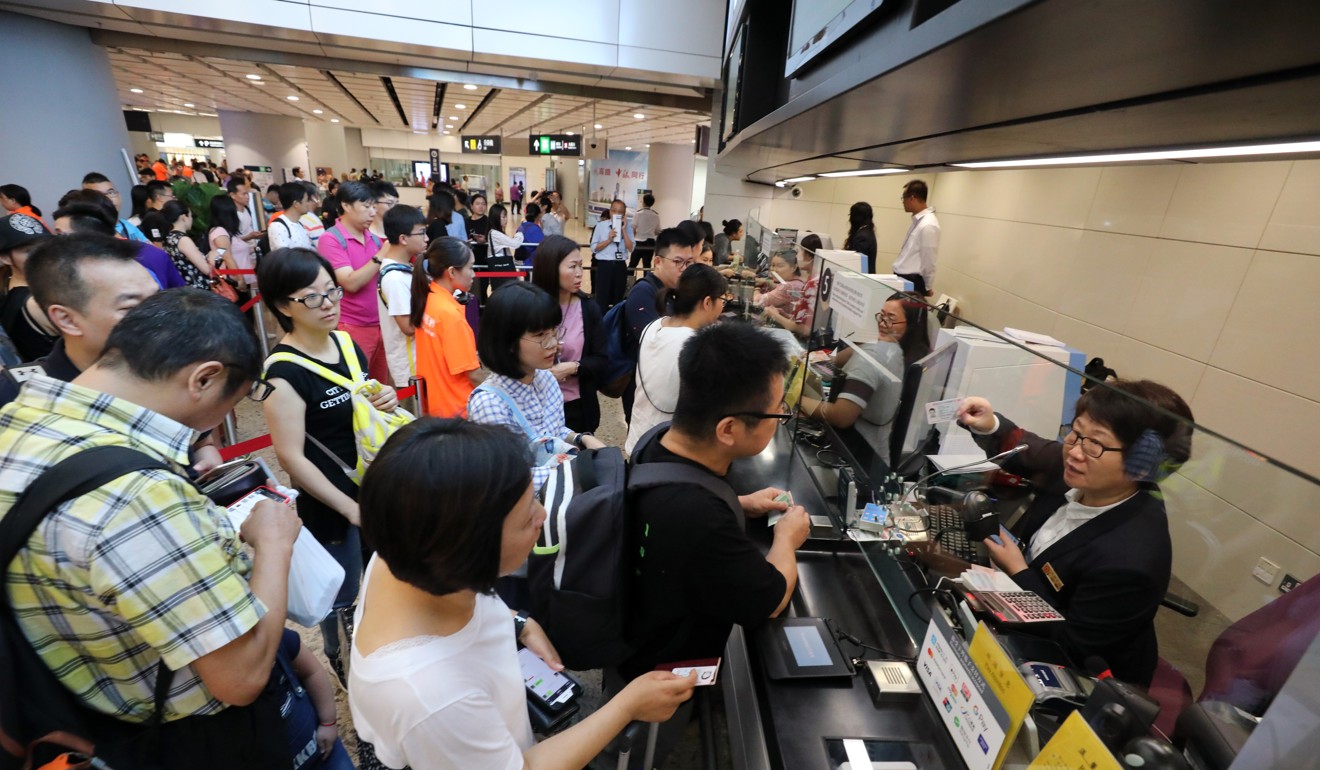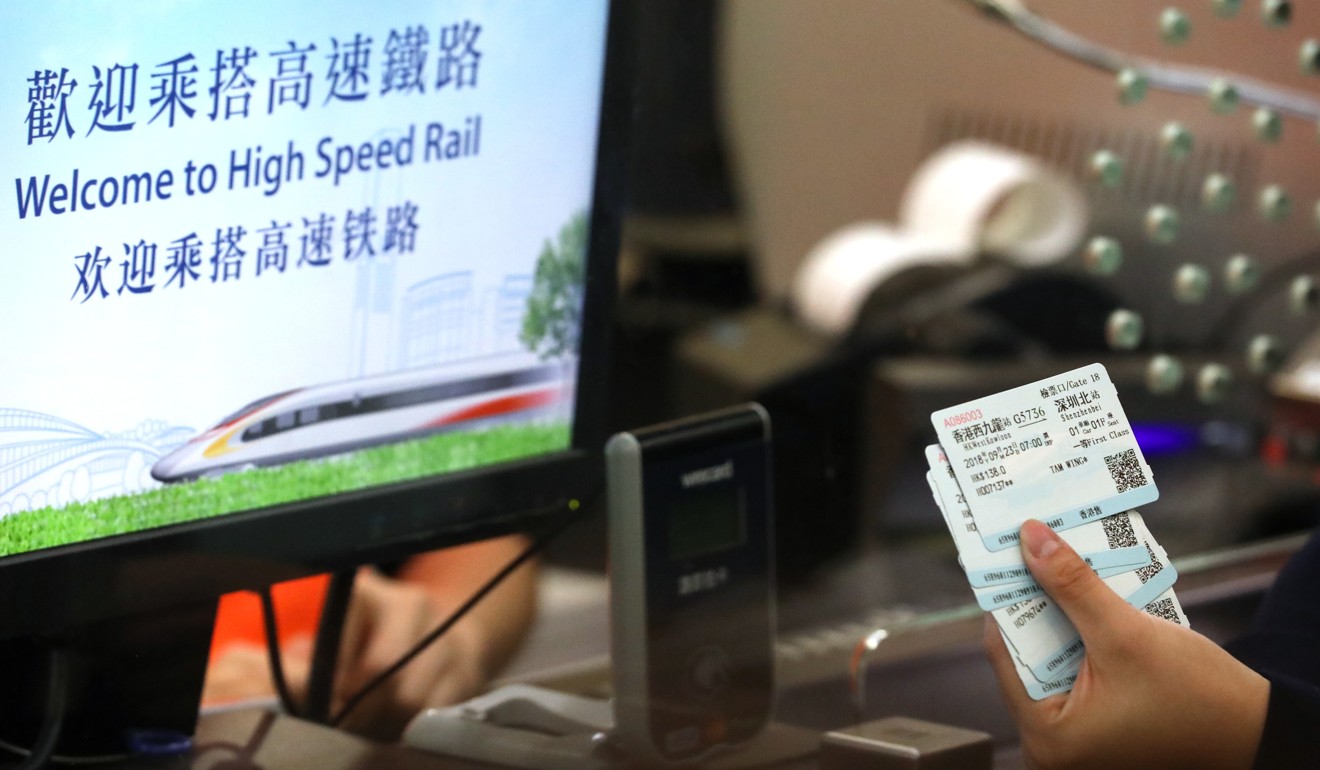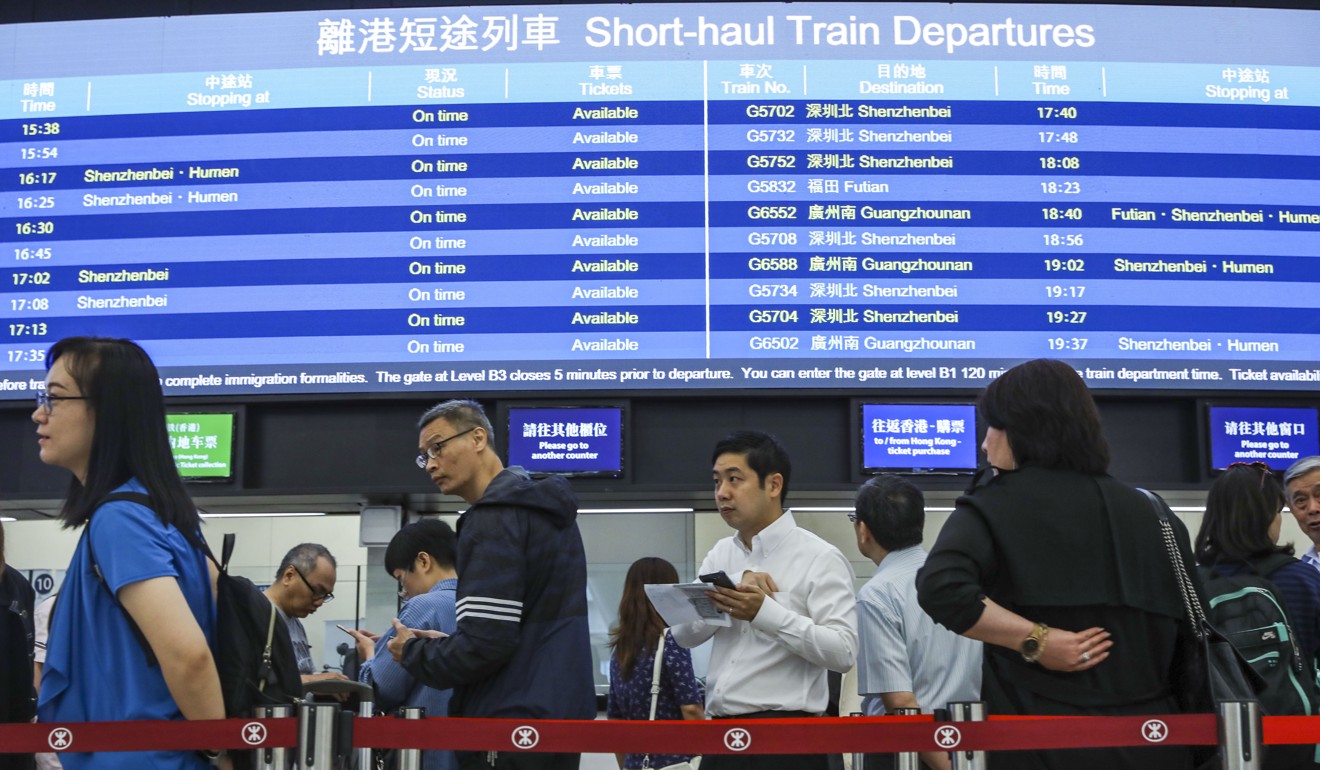
Ticketless technology could get sluggish sales on the Guangzhou-Shenzhen-Hong Kong Express Rail Link back on track, says MTR Corp operations director
- Adi Lau says technology is hoped to be in place in two to three years
- Average daily patronage of rail link is 50,000, about 38 per cent below government’s estimate of 80,100
Ticketless technology could ride to the rescue of sluggish sales on Hong Kong’s high-speed cross-border rail link, according to the MTR Corporation’s operations director.
In an exclusive interview with the Post, Adi Lau Tin-shing revealed that a system allowing commuters who buy express rail tickets online to tap out on card readers at the West Kowloon terminus was hoped to be in place within two to three years.
The latest figures show that between September 23, when the Guangzhou-Shenzhen-Hong Kong Express Rail Link opened, and November 29, about 3.4 million travellers used the much-hyped line. Average daily patronage was 50,000, about 38 per cent below the government’s estimate of 80,100.
The railway, which was more than a decade in the making and cost the city HK$84.4 billion (US$10.8 billion), is at risk of missing its profit target for the year of HK$199 million before tax and interest and its estimated revenue of HK$671 million.

Critics have poured cold water on a government prediction the link would be profitable from day one. The 26km Hong Kong stretch of the line connects with another section in mainland China linking the city to 44 destinations across the country.
Despite lacklustre sales, the government insisted there was no need for it to provide subsidies, saying the financial position of the railway had been “satisfactory”.
“We have been thinking about how to improve our ticketing system for the high-speed railway. We note the ticketing technology is advanced in some stations such as Futian,” he said.
“The national express railway is exploring ticketless travel technology, so in future, once passengers buy their tickets online, they could easily get through the station’s turnstile without the need of a physical ticket,” he said.

Lau said the technology could save a lot of time for passengers and also manpower as it would remove the need to queue to redeem physical tickets.
Passengers would only need to tap their mainland identity cards or Hong Kong home return permits on machines to get through the departure gates.
“This is the direction for the overall high-speed rail ticketing system as it will provide greater convenience for passengers,” Lau said.
“We’ve been in talks with the China Railway Corporation about incorporating ticketless technology to Hong Kong’s network. We really hope to jump on this ticketless bandwagon. In fact, we are all very eager to see it happen very quickly,” Lau added.

He envisioned the technology would be in place for the overall high-speed rail network within two to three years.
“It is up to the China Railway Corp to decide. Once it is implemented, it needs to be applicable to all stations including Hong Kong. It can’t be applied partially,” he said.
However, Lau said there might be some interim measure, such as QR codes.
For the short to medium term, he hoped to increase the appeal of the high-speed rail by promoting the grab-and-go travel concept.
“With the high efficiency of the high-speed rail, passengers could travel to various mainland destinations on a whim, just like they go to Tsim Sha Tsui for shopping.
“They don’t need to plan their journeys in advance. All they need to do is buy a ticket and go. We hope to generate this kind of excitement for travellers who choose to use high-speed rail,” he said.

He also saw some positive signs about high-speed rail-related tours, as from mid-November to the end of this month, there were more than 700 pre-booked tours, compared with 470 tours from September 23 to mid November.
“We trust that patronage will increase progressively when people get to know the convenience of the high-speed rail,” he said.
To help passengers redeem tickets they bought on mainland Chinese ticketing website 12306.cn, an additional eight ticketing machines have been installed on top of the current eight machines to manage the influx of mainland Chinese passengers during the festive season.
The number of counters for mainland Chinese ticketing affairs has also increased from five to 10.
Meanwhile, in a Legislative Council railway subcommittee meeting on Friday, Secretary for Transport and Housing Frank Chan Fan said authorities were also in talks with China Railway Corp to allow Hongkongers to purchase tickets via the mainland’s 12306.cn website.
“This is our common wish to apply the use of this mainland ticketing system in Hong Kong. We are studying whether Hongkongers can register an account on this site via email so they can also purchase express rail tickets. We are now working to resolve this technical problem,” he said.
But lawmaker Michael Tien Puk-sun, former chairman of the Kowloon-Canton Railway Corporation, urged the MTR Corp to offer more fare concessions to attract users.
“We can all see from passenger figures how the high-speed railway has poorly performed. Why doesn’t the MTR Corp consider offering interchange concessions at the West Kowloon terminus like those for the Airport Express?” he asked.
In response, Lau, who was also in attendance, said the operator would study all forms of concessions to win more business.

